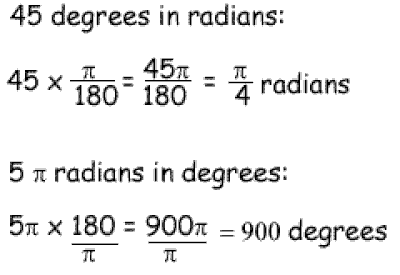
The results of the study suggest that different students focus upon different aspects of the mediating representations. This study examines student perceptions of these mediating representations through a phenomenological investigation based on concept maps, interviews, classroom observations and observed problem-solving by selected students. Traditionally trigonometry is taught by mediating the core ideas through a mixture of spatial-visual images and algebraic identities that together provide the basis for function properties and behaviour. Some students have little more than a collection of arbitrary facts and procedures that they struggle to use cohesively. Experience as a mathematics tutor suggests however that not all students finish the A-level course with a conceptual understanding of trigonometric functions that is a coherent entity. The study of trigonometry prior to starting the A-level course is predominantly concerned with problems relating to triangles either right-angled or scalene and it is during the Alevel course that trigonometry broadens into the study of the properties of function. The benefits of a conceptual understanding are greater flexibility in problem solving and greater cognitive economy. The study is guided by the theoretical frameworks of mathematical schema development proposed by Sfard (1991) and Dubinsky’s (1991) APOS theory that describe how operational knowledge of one or more procedures develops into an understanding that is conceptual. It is concerned with identifying differences in the schemas of students who are successful with solving trigonometric problems to those who are less successful. This thesis describes an investigation of the trigonometry schemas developed by a group of 16-18 year old English students during their study of A-level mathematics. Some unpredictable findings are also described in this study. The misconception of trigonometric values is figured out.

The study shows that the students can follow the learning sequences both in drawing and analysing the graph. The two main aims in this study are: 1) How the unit circle is used for drawing trigonometric function graph, 2) How the trigonometric function graph can be used to analyse the trigonometric function properties. We used the trigonometric function graph as a media to analyse the function such as trigonometric value, maximum and minimum, period, and interval in which it decreases or increases. Starting from drawing the graph then analyse each of the graphs. In this study, we propose a didactical design with the aim to figure out the properties of trigonometric functions. This is a qualitative study which elaborated the didactical design and the class observation of high school student. Thus, the competency in trigonometric function is an issue need further discussion. On the other hand, An understanding of trigonometric function is an initial stage in understanding calculus derived from it such as limit, derivative, and integral.

Another finding from structured instructional designs is that working in groups allows students to share experiences more effectively.Ī Trigonometric function is one of the challenging materials for not only high school students but also pre-service teachers and teachers.
#DEGREES TO RADI HOW TO#
The research results on how to analyze the results of the implementation of structured learning designs provide information that educators can use, including the use of graphing calculators to help and make it easier for students to identify graphs more quickly and make students accustomed to using trigonometric function symbols. The result of this research is a learning design that has been tested on 65 high school students. The worksheets were constructed based on the following focus areas: behaviour of graphs, constructing related-angle formula, and overall performance of the learner. Data were collected by using two trigonometry worksheets and lesson observations. This study is research on developing learning designs within the Didactical Design Research (DDR) framework presented in an exploratory narrative. The main objective of this study is to present classroom activities enriched with graphing calculators and observe responses about teaching with this approach. A total of 65 students were divided into two classes, the first class consisted of 32 students, and the second class consisted of 33 students. This study explored the activitiesusing a graphing calculator of 10th-grade high school students on the trigonometry topic.


 0 kommentar(er)
0 kommentar(er)
